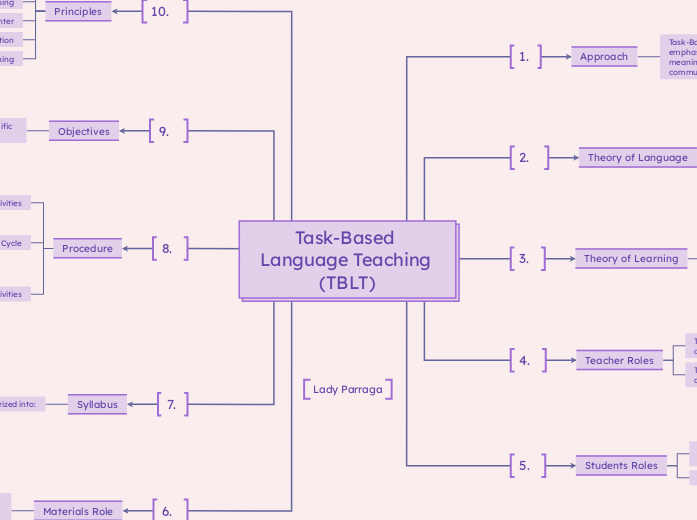Task-Based Language Teaching (TBLT)
Approach
Task-Based Language Teaching (TBLT) emphasizes learning language through meaningful, real-world tasks, focusing on communication skills.
Theory of Language
TBLT's theory of language is functional, viewing that language is primarily a means of making meaning.
Multiple models
Structural
Functional
Interactional
Theory of Learning
TBLT's theory of learning is experiential, emphasizing learning through interaction, problem-solving, and real-world task completion.
Teacher Roles
The teacher guides students on how to complete assignments.
The teacher accompanies and supervises the activity to check the procedures.
Students Roles
Students observe how language works in communication.
Students are autonomous
Principles
Asking students using the target language
There is a communicative goal
Learning by doing
Students are the center
Real world relation
Promote cooperative learning
Objectives
Goals in TBLT are determined by the specific needs of particular learners
Procedure
Pre-task activities
Instructions to topic and task
Task Cycle
Task
Planning
Report
Posttask activities
Analysis
Practice
Syllabus
In TBLT, materials can be categorized into:
Real-world tasks: These are found to be important in a needs analysis and turn out to
be important and useful in the real world,
Pedagogical tasks: These are classroom activities designed to prepare students but do not necessarily reflect real-world tasks
Materials Role
Materials provide task contexts, facilitate authentic language use, and support meaningful communication activities.
